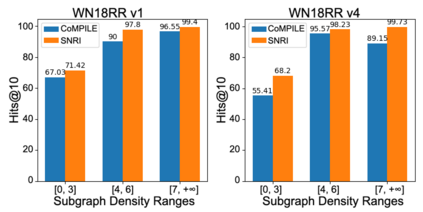Inductive link prediction for knowledge graph aims at predicting missing links between unseen entities, those not shown in training stage. Most previous works learn entity-specific embeddings of entities, which cannot handle unseen entities. Recent several methods utilize enclosing subgraph to obtain inductive ability. However, all these works only consider the enclosing part of subgraph without complete neighboring relations, which leads to the issue that partial neighboring relations are neglected, and sparse subgraphs are hard to be handled. To address that, we propose Subgraph Neighboring Relations Infomax, SNRI, which sufficiently exploits complete neighboring relations from two aspects: neighboring relational feature for node feature and neighboring relational path for sparse subgraph. To further model neighboring relations in a global way, we innovatively apply mutual information (MI) maximization for knowledge graph. Experiments show that SNRI outperforms existing state-of-art methods by a large margin on inductive link prediction task, and verify the effectiveness of exploring complete neighboring relations in a global way to characterize node features and reason on sparse subgraphs.
翻译:知识图表的感应链接预测旨在预测隐形实体之间缺失的环节,这些未在培训阶段显示的环节。前几部作品大多学习了各实体特有的嵌入点,无法处理隐形实体。最近采用了若干方法,其中附有子集,以获得感应能力。然而,所有这些作品只考虑子集附部分,而不考虑完整的相邻关系,从而导致部分相邻关系被忽视的问题,并且难以处理稀薄的子集。为了解决这个问题,我们提议SNRI Subgraph Neighbboring关系Infomax, 后者从两个方面充分利用了完整的近邻关系:节点特征的近邻关系特征和稀薄子谱的近邻关系路径。为了进一步以全球方式模拟近邻关系,我们创新地将相互信息最大化用于知识图。实验表明,SNRI在感应连接预测任务上有很大的优势,超越了现有状态方法。我们提议SNRI在描述隐形连接特性和理由方面,并核实在全球探索完全邻系关系的有效性。

















